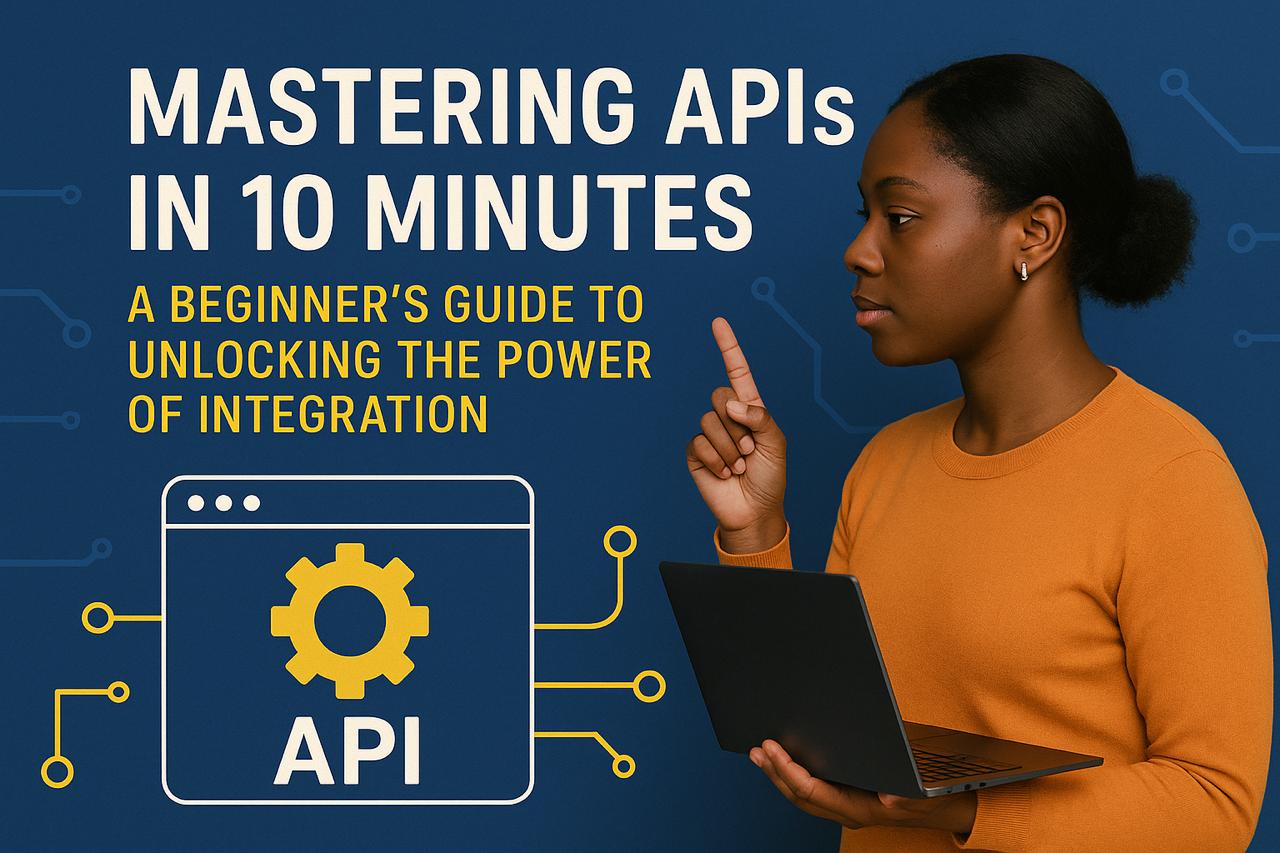
Connections are the lifeblood of modern technology. Whether you’re booking a ride, making online payments, or checking the weather on your phone, there’s an unseen engine making it all possible: APIs.
In this post, I’ll break down APIs in a way that even a novice can comprehend. In less than ten minutes, you’ll know what APIs are and how to begin considering them for your projects.
What is an API?
API stands for Application Programming Interface.
Think of it as a messenger that receives your request, relays your request to another system, and then sends you the response.
- For instance, a website uses Google’s API to confirm your identity when you check in with your Google account.
- Another Example: An app retrieves the data from a currency exchange API when you check the current exchange rates.
To put it briefly, APIs allow software to communicate with one another without requiring knowledge of the inner workings of each system.
Why Are APIs Important?
There are APIs everywhere. This is why they are important:
- Integration: They enable apps to “talk” to one another by connecting systems.
- Efficiency: Developers reuse pre-existing services rather than creating everything from start.
- Scalability: APIs facilitate programs’ rapid expansion and feature addition.
- Innovation: They enable programmers build fresh solutions on top of existing platforms.
Without APIs, the digital ecosystem we enjoy today would not be possible.
Common Types of APIs
- REST APIs: The most popular; they use the basic HTTP GET, POST, PUT, and DELETE methods.
- SOAP APIs: Usually found in older corporate systems, these APIs are more rigid and structured.
- GraphQL: This cutting-edge method allows you to retrieve the precise data you require.
- Web-hooks: Event-driven APIs that “push” information in response to events.
A Brief Illustration: Calling an API
Suppose you wish to use a public API such as OpenWeatherMap to retrieve the current weather for Lagos State.
Sample Request:
GET https://api.openweathermap.org/data/2.5/weather?q=Lagos&appid=your_api_key
The API would return data in JSON format, such as:
{
"weather": [
{
"main": "Clouds",
"description": "scattered clouds"
}
],
"main": {
"temp": 301.15,
"humidity": 74
}
}Real-time weather data is now pulled straight from the source into your app, eliminating the need for manual weather information updates.
How to Begin Integrating APIs into Your Projects
- Pick a simple public API: Such as one that deals with weather, jokes, quotes, or currency conversion.
- Obtain an API key: Similar to a password for access. Most providers supply you with one upon registration.
- Use tools to make requests: Postman, cURL, or even your browser can be used to test APIs.
- Use in code: Incorporate basic functions (such as PHP, JavaScript, and Python) into your application.
Best Practices for Working with APIs
- Always read the documentation carefully and seek clarification where necessary.
- Secure your API keys always. Never expose them publicly.
- Handle errors gracefully (e.g.,what happens if the API is unavailable).
- To save time and resources, use caching for frequently used data.
- Be mindful of rate limits: API providers frequently place a cap on the maximum number of requests you may submit.
Like the internet’s hidden highways, APIs are essential to its proper operation but are hidden from most users.
Learning the fundamentals of APIs will offer you a significant advantage, regardless of your level of experience as a developer or your level of interest in how apps connect.
Kindly drop your thoughts and feedback in the comments section below. I’d love to hear from you!






First to comment😀
Proud subscriber💃💃
6 minutes well spent!
Detailed and Straight to the point👌👌👌
Simple, efficient, and informative. Everything a beginner’s guide should be.
Great. All of this work was definitely worth it.
Short, sweet, and powerful. You’ve made learning APIs less intimidating!
Super clear and beginner-friendly
I’ve read tons of articles on APIs, but this one nailed it in under 10 minutes. Impressive
Beautifully written. Much appreciated
More of this please.
Weldone Ifycodes